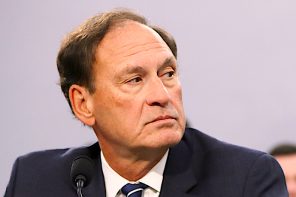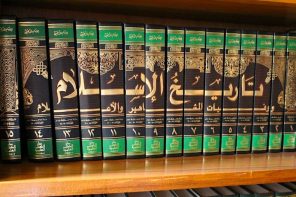I watched yesterday’s reading of the Constitution, all 84 minutes of it, and you can watch it too, in six parts, here. I must say, I thought it was great—something that should be done much more often and in many more contexts. Putting aside the political motives behind the spectacle, it was impossible not to be moved by the parade of American men and women of various races and ethnicities coming to the podium to take their turns at reading. Especially moving was African-American Democrat from Georgia John Lewis reading the Thirteenth Amendment:
“Neither slavery nor involuntary servitude, except as a punishment for crime whereof the party shall have been duly convicted, shall exist within the United States, or any place subject to their jurisdiction.”
My courses have long included the idea that there is an aspect of our national identity that has the dimensions of, and fulfills the functions of, traditions that are more readily recognizable as religions. Scholar have called this American civil religion; it is complete with myths, rituals, sacred spaces and pilgrimages. I find that discussion of American civil religion often helps students grasp the descriptive comparative categories of religion and get outside their own religious frameworks.
I’m not the first to note that yesterday’s reading of the Constitution by the new Congress constituted high ritual and that the document took on a sacred status (some even called it a fetish). Yet there was another aspect that clearly dovetailed with more traditional forms of American religion, and it is marked by the same cleavages as well.
Of course, the controversy between the tea party and the rest of us has never been over the Constitution. Everyone reveres our founding document. The controversy has been over what the Constitution means — and it’s not unlike the fight between fundamentalists and modernists over how to read the Bible. One side believes that there is a unified, discernable, original intent to which we are bound for all time; a singular book called the Bible and a unified intent of “the founders” for the Constitution.
The other side believes both are a blending of viewpoints containing much wisdom and important principles but that they are imperfect; they must and they do change over time. For this group the Bible is a collection of books written by a variety of people over a very long time, assembled by a human process fraught with politics; and the Constitution is a compromise by wise leaders who represented diverse viewpoints and interests and who were responding to specific issues they faced in their lifetimes.
But what the public reading showed powerfully was the real inadequacies of the “original intent” principle. Those who initiated the public reading had campaigned on returning to the intentions of the founders but they found themselves in the awkward place of having to decide whether to read the document as written or as amended. They opted for the amended version.
They left out other parts too. Just as many who claim we should be governed by the Bible ignore sections that don’t fit their worldviews (even the proponents of stoning homosexuals don’t really embrace real biblical marriage—polygamy), “originalists” did as well. The edited version of the Constitution that was read eliminated “inconvenient” sections like the three-fifths compromise and the regulations for returning escaped slaves. Though they left intact the gender requirements for voting, leaving me a bit worried that they didn’t see that as problematic. Maybe we should start really reading the text of the whole Bible out loud too; people might be really surprised at what they find in there.




